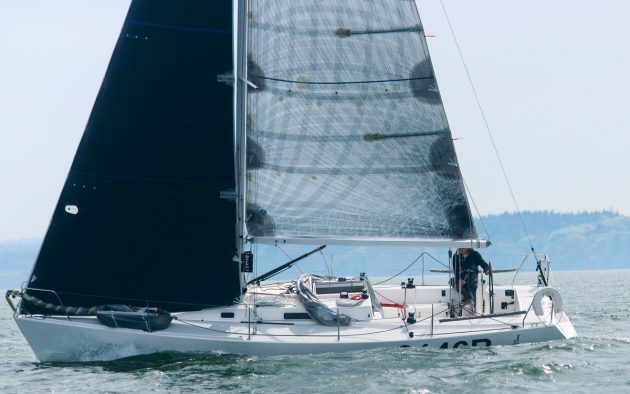This poster child for the 1990s bowsprit revolution now looks more like an affordable offshore/coastal performer, writes Rupert Holmes
While no subsequent J-boat has matched the J/24 in sales, the brand nevertheless became hugely successful across the globe.
The company went on to lead the world in adopting asymmetric spinnakers, first with the J/22 in 1983 and then the J/92 in 1992 and J/105 three years after that.
The latter was also set up to allow easy short-handed sailing. Cowes Week photos of fleets on the plane at speeds of 15-18 knots may suggest that, like the J/24 and J/22, the 105 and the 109 that followed in 2004 were conceived for inshore use.
Article continues below…
Shipwrecked in a 14ft keelboat then rescued by a cargo ship
Yann Quenet is a genius from Brittany I would love to meet. He is an inventor, designer, and builder of…
Legend 356 sailboat: Big in Britain but born in the USA
Hunter Marine became a major force in boatbuilding from the 1980s through to the financial crisis of 2008, with the…
However, that’s not the case at all. Both have proved extremely seaworthy when raced long distances offshore, such as in the OSTAR, AZAB and Round Britain and Ireland.
Arguably the biggest drawback of the J/105 is that it has restricted headroom of 1.7m (5ft 5in).
However, 109s have more space and now make capable and very attractive fast cruisers, a factor that helps buoy their prices even as the boats get older.
J/105 specification
LOA: 10.5m / 34ft 6in
LWL: 8.99m / 29ft 5in
Beam: 3.35m / 11ft 0in
Draught: 1.98m / 6ft 6in
Displacement: 3,515kg / 7,750lb
Ballast: 1,542kg / 3,400lb
Sail area: 52.6m2 / 577ft2
Current market value: £36,000-£54,000 / $49,000-$74,000






